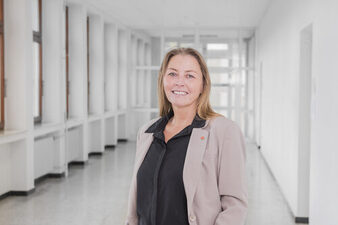About the project
In the past, embedded systems were often defined by their electrical functionality. If a microcontroller was available as a control element, the software sometimes made a subordinate contribution to the system functionality. The production of such embedded systems was therefore essentially based on the electrically and mechanically flawless assembly of circuit boards. The production test was carried out directly on the production line by means of an electrical or optical test (AOI or e.g. ICT), usually using a stand-alone test device. If a microcontroller was installed, it was only integrated into the test as part of the final production software.
Embedded systems are now part of cyber-physical systems. The complexity and functionality of such software-intensive systems is characterized by the microcontroller, other digital assemblies and, above all, the software. The production test of such a system cannot be performed as a pure electronics test (e.g. ICT) or as a black box test. Test systems that can adequately test complex embedded systems are complex to operate and expensive. EMS service providers therefore currently use either complex test systems such as in-circuit testers (ICT) with a full range of functions for electrical and functional tests or self-built test equipment.
Software-intensive embedded systems are supplied by the manufacturer to a customer who installs them in their end products (e.g. devices, machines, systems). A test must also be carried out at this customer (OEM business). Essential parts of the functionality can only be tested in the final product. For microcontroller-based, software-intensive embedded systems, there is therefore a need for a simple, cost-effective and networkable test solution for automating the testing of electronic assemblies and for use in heterogeneous development and production networks.
This need is to be addressed by the Cyber Physical Test System (CPTS) to be developed. The system consists of
- a standardized, simple "test mouse" (see description below), which loads the device under test (DUT) with test programs and controls the test execution
- add-on modules for standardized or product-specific tests
- a connection via the Internet to a test cloud (see description below)
- a user interface, e.g. in the form of a tablet
The central component is the so-called "test mouse". This is a compact module that is connected to the Internet via cable or wireless technology (WIFI, mobile radio) and has interfaces (connectors) that are connected to the module to be tested (device-under-test).
Another important component is the "test cloud". This server-based software, based on an "Internet-of-Things platform" available as open source software, for example, performs the following functions
performs the following functions, among others:
- Management of test mice connected via the Internet, detection and integration of a test mouse after switching on
- Configuration of the test mouse and the device-under-test (DUT) with software, test programs, etc. (transparent access)
- Management of test programs and test data and protocols
- Authentication of users (e.g. development and test engineers), user and rights management
- Test evaluation
The two sub-projects of the Fachhochschule Dortmund deal with the following topics:
- Development of the server-based test cloud solution and the user interface (sub-project Sachweh, Faculty of Computer Science).
- Development of FPGA-implemented measurement circuits for the test mouse (sub-project Schulz, Faculty of Electrical Engineering)
Sponsor
Federal Ministry for Business Studies and Energy
Funding code
ZF4038209BZ8 (Sachweh)
ZF4595401BZ8 (Karagounis)
Cooperation/project partners
- A.R. BAYER DSP Systeme GmbH
- CP contech electronic GmbH
- Hesse Vorrichtungen und Fertigungstechnik GmbH
- Fachhochschule Dortmund, Faculty of Computer Science
- Fachhochschule Dortmund, Faculty of Electrical Engineering
Contact & Team
Contact person
Management
Team
Igor Kimchenko


